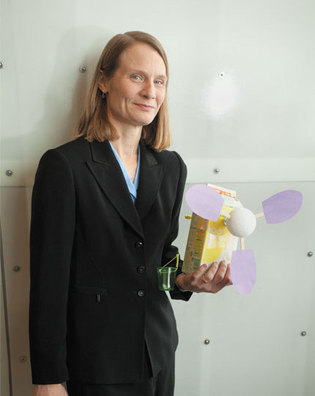 loading
loading
Where They Are NowScience for five million—and countingEngineering for the preteen set.  Mark OstowChristine Cunningham, ’91, ’91MA, graduated first in her class at Yale, and most people urged her to do graduate work or study medicine. But she wanted to teach. View full imageChristine Cunningham ’91, ’91MA (both in biology), is the director of Engineering is Elementary, a program of the National Center for Technological Literacy at the Museum of Science, Boston, that teaches engineering to first through fifth graders. Five million students have already participated. Cunningham lives with her husband and three children in Pennsylvania. Y: What kind of science background did you get when you were young? C: When I was small, my mom had all kinds of projects and activities for us. We would take a walk in the woods and identify the birds and trees. Y: Can you really do that? C: Well, not now! It’s 30 years later. And she always had books about science and science projects. Y: And you wanted to do what she did—teaching—multiplied by five million? C: So many people at Yale wanted me to go on to grad school in biology, or medicine. Fortunately I had an adviser who didn’t discourage me. Y: What about science education needed fixing? C: Science, as it’s often taught, is not that appealing to certain populations. It’s taught as a series of immutable facts, divorced from society. But that’s not how some people, like girls and underrepresented youth, want to be learning. So that’s one reason why our transition to engineering happened. Y: The kids you were trying to reach wanted something…? C: More open-ended. For instance: if you go to a country to build a bridge and the villagers have always crossed the river at one spot, but you decide geologically it’s better if you go down the river and put it there, they might not use it. You need to balance the location that is geologically better with where the villagers have always crossed. Also, the best engineering projects for children have no right answer and encourage children to learn from failed designs. Engineers know it’s OK to fail and are constantly looking for ways to improve a technology. But the idea that failure is good can be a radical concept in the classroom. Y: Give me an example of your curriculum’s impact. C: There’s a girl in one class and the teacher told us she’d never been a high-performing student—until they did this water unit. We put cornstarch, loose tea, and potting soil in water. The challenge is to remove them all, including the tea color. Y: That’s actually possible? C: You’re going to have to try more than once. We give them sand, cotton balls, coffee filters, a screen. About two months after the challenge was over this girl came in and said, “Teacher, teacher! I did it! I made the water filter that can get the water completely clear!”Then she said, “For my next project, when I go to my homeland of the Dominican Republic, I’m going to work on the desalinization of water.”
The comment period has expired.
|
|